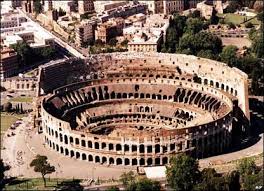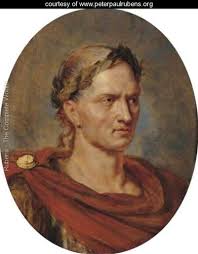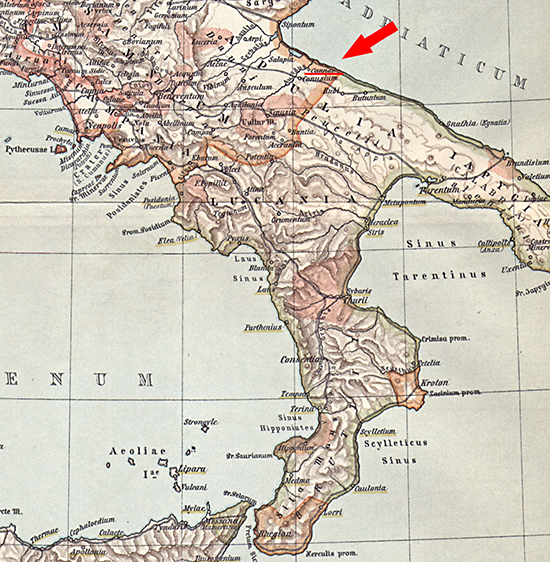Tuesday 29 May 2012
The Battle of Cannae
Map of Ancient Cannae
The Battle of Cannae
The Battle of Canne was a major battle of the Second Punic War between the Carthaginian Empire and the Roman Republic. The Battle of Cannae took place in southeast Italy in Cannae, a small town in Apuliaon. This battle occurred on the 2nd of August, 216 BC. The Battle of Cannae, was a result of a major dispute over the city of Saguntum, situated in modern day Sagunto, Spain. Sagunto supported the Romans in their long history of disputes with the Carthaginians. Hannibal, the general of the Carthaginian Army, attacked the city of Saguntum in a bloody siege. This sparked the 2nd Punic War, which played out in the Battle of Cannae.
Carthage and Rome had already fought against one another in the first Punic War, for control of Sicily and the wider Mediterranean area. The Romans defeated the Carthaginians in the First Punic War. To try and stop Roman expansion, Hannibal invaded Italy from Spain sometime after 218 BC.
Hannibal successfully defeated Roman armies at Trebbia in 218 BC and Lake Trasimene in 217 BC. He then marched south towards Cannae and captured this important city, it was at this point that the Romans decided to again face Hannibal in battle in order to try and defeat him once and for all. Rome had raised a very large army of around eighty thousand infantry and six thousand cavalry in an attempt to destroy Hannibal. Hannibal's Army comprised a range of Spanish, Celtic, Carthaginian, Numidian and other mercenaries and is generally considered to have been smaller than the Roman Army, numbering approximately fifty-six thousand infantry and cavalry.
The Roman Legion arranged itself in a series of ranks facing Hannibal's Army which arranged itself in a crescent shape bulging towards the Roman Legion. In summary the Romans attacked Hannibal's center. Hannibal withdrew the crescent shape forces leaving his flank forces secure on either side. The Romans pursued what they believed was a withdrawing enemy but in reality Hannibal now encircled the Roman army. Hannibal destroyed the Roman Legion, it is believed that seventy thousand were killed, ten thousand were captured and the rest escaped. Only Rome was capable of surviving such a military disaster. Rome raised more armies and invaded North Africa threatening Carthage itself. Hannibal was forced to return to defend Carthage and was ultimately defeated at the Battle of Zarma by Scipio Africanus. From then on Rome has expanded its empire and the Carthaginians were erased from history.
Bibliography:
Books
Banks, J.A (et al). (1995). The world past and present east and west. New York: Macmillan/McGraw-Hill school publishing company.
Yocherer, G. (1996) Classic Double Encirclement. USA: The National Historical Society.
Bahmanyar, M. (2009). Vanquished, Crushing defeats from ancient Rome to the 21st Century. Oxford: Osprey Publishing.
The Colosseum
THE COLOSSEUM
The Roman Colosseum

Construction of the Colosseum began by Emperor Vespasian in 72 AD. When Emperor Vespasian died in AD 79, the role of finishing the Colosseum was left in the hands of Vespasian's son, Titus. The Colosseum was made for entertainment for the king and people of Rome by making gladiators and Christians fight against a range of wild animals, as well as each other. The Colosseum was also used for mock naval battles which was when the Romans flooded the Colosseum with a large body of water and made gladiators fight on small ships.
The Colosseum was built as the central feature of an entertainment and commercial quarter in Ancient Rome. Whilst the Colosseum itself hosted large events the surrounding area was used by other entertainers and traders. With a large numbers of people attending events and with a large number of traders and entertainers the site would have been an extremely busy and exciting location to visit. The Colosseum was constructed in Rome which at the time was the center and capital city of a large empire. The Colosseum was a large amphitheater built for hosting large entertainment events. It was a large multi-storey circular built with stone and wood and capable of seating 50,000 spectators.
One of the three main features of the colosseum is the circular architecture. Another main feature is the 50,000 seats for spectators to watch the gladiator battles. The last main feature of the colosseum is the mechanical machines used for pulling up the doors of the cages to let the animals out.
One of the things that historians has learnt from this ancient site is that the Romans had highly developed architecture of the Colosseum. Another thing that historians have learnt about the Romans is that they enjoyed large spectacular entertainment events which were hosted in the colosseum.
Bibliography :
Website: A view on cities. (2012) available URL http://www.aviewoncities.com/_cityindex.htm last accessed May 27th 2012.
Book:
Banks, J.A (et al). (1995). The world past and present east and west. New York: Macmillan/McGraw-Hill school publishing company.
Construction of the Colosseum began by Emperor Vespasian in 72 AD. When Emperor Vespasian died in AD 79, the role of finishing the Colosseum was left in the hands of Vespasian's son, Titus. The Colosseum was made for entertainment for the king and people of Rome by making gladiators and Christians fight against a range of wild animals, as well as each other. The Colosseum was also used for mock naval battles which was when the Romans flooded the Colosseum with a large body of water and made gladiators fight on small ships.
The Colosseum was built as the central feature of an entertainment and commercial quarter in Ancient Rome. Whilst the Colosseum itself hosted large events the surrounding area was used by other entertainers and traders. With a large numbers of people attending events and with a large number of traders and entertainers the site would have been an extremely busy and exciting location to visit. The Colosseum was constructed in Rome which at the time was the center and capital city of a large empire. The Colosseum was a large amphitheater built for hosting large entertainment events. It was a large multi-storey circular built with stone and wood and capable of seating 50,000 spectators.
One of the three main features of the colosseum is the circular architecture. Another main feature is the 50,000 seats for spectators to watch the gladiator battles. The last main feature of the colosseum is the mechanical machines used for pulling up the doors of the cages to let the animals out.
One of the things that historians has learnt from this ancient site is that the Romans had highly developed architecture of the Colosseum. Another thing that historians have learnt about the Romans is that they enjoyed large spectacular entertainment events which were hosted in the colosseum.
Bibliography :
Website: A view on cities. (2012) available URL http://www.aviewoncities.com/_cityindex.htm last accessed May 27th 2012.
Book:
Banks, J.A (et al). (1995). The world past and present east and west. New York: Macmillan/McGraw-Hill school publishing company.
Monday 28 May 2012
Julius Caesar
Julius Caesar

Julius Caesar was born in Subura, Rome, July 100BC. Julius Caesar was a very powerful Roman General who reigned from October 49BC to March 44BC.
It was an ancient Roman tradition that the first born son in the family was to be named after his father, so his name became Gaius Julius Caesar. Julius was the grandchild of Venus and the son of Aenus.
Julius Caesar was very much like our former Prime Minister Kevin Rudd. I believe this because they were both strong political leaders and were both betrayed. For example Julius Caesar was betrayed by 60 senators who stabbed him to death. Kevin Rudd was betrayed by the Labour Party and especially Julia Gillard, as he lost his position in parliment and Julia Gillard gained the position of Prime Minister of Australia.
In the year 51 BC Caesar had successfully completed his conquest of Gaul. In his conquest Caesar extended Rome's territory to the English Channel and the Rhine River, situated in Western Europe. Caesar became the first Roman General to cross both the English Channel and the Rhine River when he built a bridge across the Rhine. He then conducted the first invasion of Britain. These achievements granted him unmatched military power and threatened Pompey's standing.
In 53 BC Crassus died which futher upset the balance of power. Political change in Rome finally led to a standoff between Caesar and Pompey. Ordered by the Senate to stand trial in Rome for various charges, Caesar marched on Rome with one legion from Gaul to Italy. This lead to a civil war from which he emerged as the unrivaled leader of the Roman world. After gaining control of government, Caesar began extensive reforms of Roman society and government. He concentrated on the system of government of the Republic, and was eventually proclaimed "dictator in perpetuity"(ruler for life). A group of senators, led by Marcus Junius Brutus, murdered Caesar on the Ides on the 15th of March 44 BC, hoping to restore the principles in government of the Republic. However, the result was a large series of civil wars, which ultimately led to the establishment of the permanent Roman Empire by Caesar's adopted heir (a person legally entitled to the property or rank on another person's death).
Bibliography:
http://www.notablebiographies.com/Br-Ca/Caesar-Julius.html#b
http://en.wikipedia.org/wiki/Assassination_of_Julius_Caesar
http://www.peterpaulrubens.org/Julius-Caesar.jpg
THE LIFE AND TIMES OF JULIUS CAESAR.
Author : Paul Hamlyn
Julius Caesar was born in Subura, Rome, July 100BC. Julius Caesar was a very powerful Roman General who reigned from October 49BC to March 44BC.
It was an ancient Roman tradition that the first born son in the family was to be named after his father, so his name became Gaius Julius Caesar. Julius was the grandchild of Venus and the son of Aenus.
Julius Caesar was very much like our former Prime Minister Kevin Rudd. I believe this because they were both strong political leaders and were both betrayed. For example Julius Caesar was betrayed by 60 senators who stabbed him to death. Kevin Rudd was betrayed by the Labour Party and especially Julia Gillard, as he lost his position in parliment and Julia Gillard gained the position of Prime Minister of Australia.
In the year 51 BC Caesar had successfully completed his conquest of Gaul. In his conquest Caesar extended Rome's territory to the English Channel and the Rhine River, situated in Western Europe. Caesar became the first Roman General to cross both the English Channel and the Rhine River when he built a bridge across the Rhine. He then conducted the first invasion of Britain. These achievements granted him unmatched military power and threatened Pompey's standing.
In 53 BC Crassus died which futher upset the balance of power. Political change in Rome finally led to a standoff between Caesar and Pompey. Ordered by the Senate to stand trial in Rome for various charges, Caesar marched on Rome with one legion from Gaul to Italy. This lead to a civil war from which he emerged as the unrivaled leader of the Roman world. After gaining control of government, Caesar began extensive reforms of Roman society and government. He concentrated on the system of government of the Republic, and was eventually proclaimed "dictator in perpetuity"(ruler for life). A group of senators, led by Marcus Junius Brutus, murdered Caesar on the Ides on the 15th of March 44 BC, hoping to restore the principles in government of the Republic. However, the result was a large series of civil wars, which ultimately led to the establishment of the permanent Roman Empire by Caesar's adopted heir (a person legally entitled to the property or rank on another person's death).
Bibliography:
http://www.notablebiographies.com/Br-Ca/Caesar-Julius.html#b
http://en.wikipedia.org/wiki/Assassination_of_Julius_Caesar
http://www.peterpaulrubens.org/Julius-Caesar.jpg
THE LIFE AND TIMES OF JULIUS CAESAR.
Author : Paul Hamlyn
Ancient Rome
ANCIENT ROME
Ancient Rome was situated in Southern Europe and is in the centre of the country Italy.
Rome had many neighbouring countries some include Greece, IIIyricum, Asia, Africa, Gallia, Hispania, Syria and Samartia.
Some neighbouring seas are The Mediterranean Sea, The Agelean Sea, The Ionian Sea, The Adriatic Sea and The Tyrrhenian Sea.
Ancient Rome had many landmarks such as the Colusseum, the Roman Forum, the Pantheum as well as natural landmarks for example, the famous Seven Hills of Rome.
Modern day neighbouring countries of Rome include Croatia, France, Austria, Hungary, Greece, Slovenia, Monaco and Switzerland.
Map of Modern Day Rome
Bibliography :
http://www.notablebiographies.com/Br-Ca/Caesar-Julius.html#b
http://www.lonelyplanet.com/maps/europe/italy/
 |
| Map Of Ancient Rome |
ANCIENT ROME
Ancient Rome was situated in Southern Europe and is in the centre of the country Italy.
Rome had many neighbouring countries some include Greece, IIIyricum, Asia, Africa, Gallia, Hispania, Syria and Samartia.
Some neighbouring seas are The Mediterranean Sea, The Agelean Sea, The Ionian Sea, The Adriatic Sea and The Tyrrhenian Sea.
Ancient Rome had many landmarks such as the Colusseum, the Roman Forum, the Pantheum as well as natural landmarks for example, the famous Seven Hills of Rome.
Modern day neighbouring countries of Rome include Croatia, France, Austria, Hungary, Greece, Slovenia, Monaco and Switzerland.
Map of Modern Day Rome
Bibliography :
http://www.notablebiographies.com/Br-Ca/Caesar-Julius.html#b
http://www.lonelyplanet.com/maps/europe/italy/
Subscribe to:
Posts (Atom)

